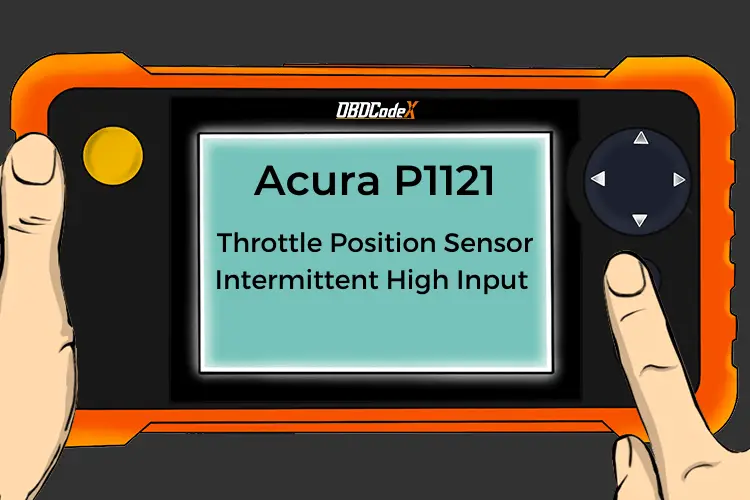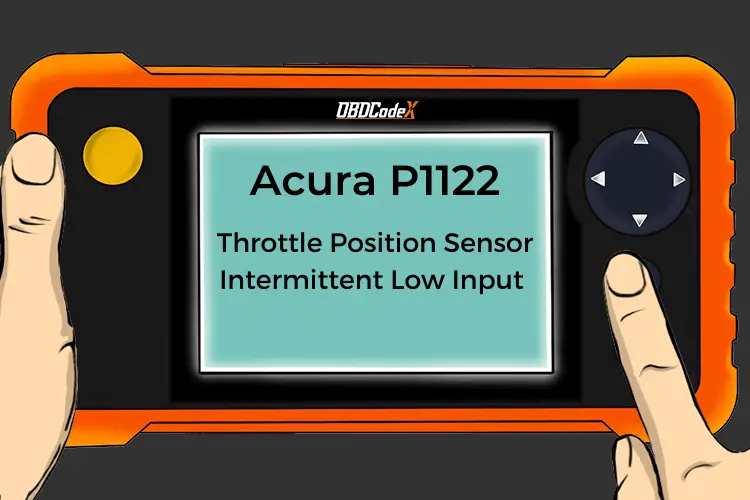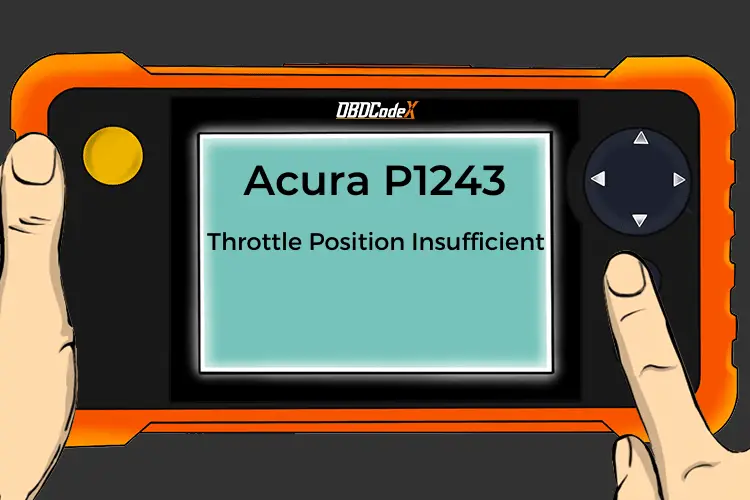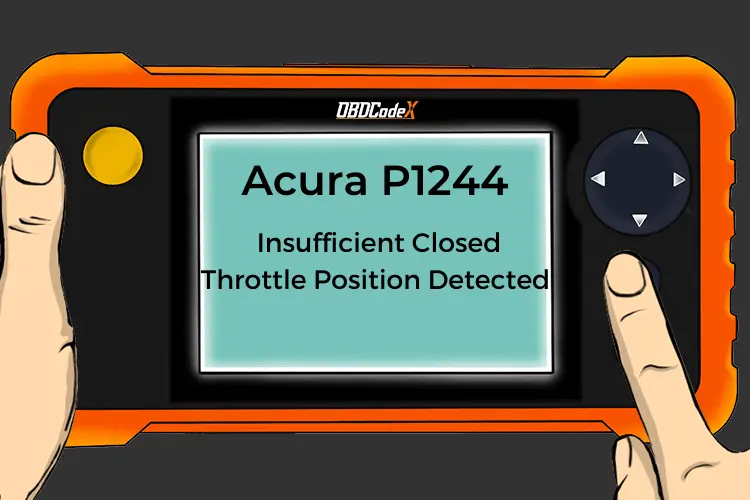P063E: Auto Configuration Throttle Input Not Present
Is your scanner showing P063E?
No worries. We'll show you what it means and how to deal with it.
P063E: Auto Configuration Throttle Input Not Present
OVERVIEWWhat Does The P063E Code Mean?
If your OBD-II equipped vehicle has stored a code P063E, it means that the powertrain control module (PCM) has not detected an auto configuration throttle input signal.
When the ignition cylinder is placed in the ON position and the various on-board controllers (the PCM included) are energized, multiple self-tests are initiated. The PCM depends upon input signals from engine sensors to automatically configure an engine start-up strategy and perform these self-tests. Throttle position is among the key input signals required by the PCM for auto configuration.
The throttle position sensor (TPS) should provide the PCM (and other controllers) with a throttle input signal for automatic configuration purposes. The TPS is a variable resistance sensor that is mounted on the throttle body assembly. The tip of the throttle plate shaft slips inside the TPS.
As the throttle plate shaft is moved (either via the accelerator cable or drive-by-wire system), it also moves a potentiometer inside the TPS and causes a variation in circuit resistance. The result is a change in TPS signal circuit voltage to the PCM.
If the PCM fails to detect a throttle position input circuit, when the ignition switch is placed in the ON position and the PCM is energized, a code P063E will be stored and a malfunction indicator lamp may be illuminated. The auto configuration system may also be deactivated; resulting in serious drivability issues.
What Are The Symptoms Of The P063E Code?
Symptoms of a P063E trouble code may include:
- Engine stall at idle (especially at start up)
- Delayed engine start
- Drivability issues
- Other TPS related codes
What Are The Potential Causes Of The P063E Code?
Causes for this code may include:
- Defective TPS
- Open or shorted circuit between the TPS and PCM
- Corrosion in TPS connector
- Bad PCM or PCM programming error
How Serious Is This P063E Code?
Auto configuration codes should be taken seriously as engine start up idle quality and drivability may be at risk. Classify a stored code P063E as severe and address it as such.
How Can You Fix The P063E Code?
If there are any other TPS related codes present, diagnose and repair those before attempting to diagnose the P063E.
A diagnostic scanner, a digital volt/ohmmeter (DVOM), and a reliable source of vehicle information will be required to accurately diagnose a code P063E.
Consult your source of vehicle information for applicable technical service bulletins (TSB). If you discover one that matches the vehicle, symptoms, and codes with which you are wrestling, it may aid in reaching a correct diagnosis.
I always begin any code diagnosis by connecting the scanner to the vehicle diagnostic port and retrieving all stored codes and pertinent freeze frame data. I like to write this information down (or print it if possible) in case I need it later (after the codes are cleared).
Next, I clear the codes and test drive the vehicle until one of two scenarios occurs:
A. The code fails to reset and the PCM enters readiness mode
B. The code is reset
If scenario A occurs, you are dealing with an intermittent code and the conditions which caused it may have to worsen before an accurate diagnosis can be made.
If scenario B occurs, continue with the steps listed below.
Step 1
Perform a visual inspection of all related wiring and connectors. Check PCM power supply fuses and relays. Make repairs as required. If no problems are found, proceed to the next step.
Step 2
Obtain diagnostic flow charts, wiring diagrams, connector face views, connector pin-out charts, and component testing specifications/procedures from your vehicle information source.Once you have the correct information, use the DVOM to test TPS voltage, ground, and signal circuits.
Step 3
Begin with a simple test of voltage and ground signals at the TPS connector. If there is no voltage, use the DVOM to trace the circuit back to the appropriate terminal of the PCM connector. If there is no voltage on this pin, suspect that the PCM is defective. If there is voltage at the PCM connector pin, repair the open circuit between the PCM and the TPS.
If there is no ground, trace the circuit back to the central ground location and make repairs as needed. If ground and voltage are discovered at the TPS connector, proceed to the next step.
Step 4
Although TPS data can be accessed through the scanner data stream, live data from the TPS signal circuit may be gathered using the DVOM. Live data is much more accurate than data observed in the scanner data stream display. An oscilloscope may also be used to test the TPS signal circuit but it is not required.
Connect the positive test lead of the DVOM to the TPS signal circuit (with the TPS connector plugged-in and the key-on-engine off). Connect the negative test lead of the DVOM to battery or chassis ground.
Observe TPS signal voltage while gradually opening and closing the throttle.
If glitches or voltage spikes are detected, suspect that the TPS is defective. TPS signal voltage normally ranges between .5-volts at idle to 4.5-volts at wide open throttle.
If the TPS and all system circuits are functional, suspect a defective PCM or a PCM programming error.
- The P063E may be applicable to drive-by-wire or conventional throttle body systems
Recommended Parts
Below are some recommended auto parts to help you address the trouble code affecting your vehicle and get it running smoothly again:
Note: During the purchasing process, please check carefully whether the part you want to buy fits your car!
Reference Sources
P063E Auto Configuration Throttle Input Not Present, OBD-Codes.








